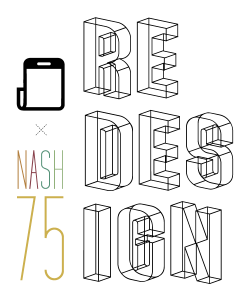Erin Millar offers young freelancers advice at NASH
by H.G. Watson
It’s intimidating to approach someone you don’t know and ask them to pay you to write. What if they say no? Or worst of all, don’t even respond to your carefully crafted pitch? Yet getting your foot in the door at any publication means getting over your fear.
Over the weekend, freelance journalist Erin Millar gave 15 student journalists some advice on how to do just that at the annual Canadian University Press conference (NASH) in Toronto.
“There’s so much value in going and being a face,” said Millar, who has written for Reader’s Digest and the Globe and Mail.
During her workshop, Millar recalled how she relaxed the first time she pitched to a national magazine. “I was drinking,” she laughed (she was out to dinner with an editor from Maclean’s at the time). But that face-to-face time led to her first article in Maclean’s. It gave her the added boost she needed to start working for larger media outlets.
Millar’s workshop focused mainly on developing pitches. Participants were at first tentative about talking about their ideas, some of which were clearly near and dear to their hearts. But as the session got underway, people started throwing out their ideas and sharing suggestions for how to make them better.
The exercise demonstrated the value in not hiding behind a computer screen when approaching editors and even your fellow writers. In person, you can actually get your ideas out there and improve them just by talking them through.
Millar doesn’t approach freelancing as a question of what pitch should be sold where. Instead, she looks at the magazines she wants to work for and starts trying to connect with the editors, either through networking or simply by calling them. Her method allows her to get a good sense of what that particular outlet is looking for.
Once you do get face-to-face time with an editor, you still may not make a successful pitch. Millar said this isn’t a reason to stop talking to them. She feels it’s important to keep developing a relationship.
“Don’t just let the conversation end there. Say ok, what do you need? Why didn’t this work? Ask those questions,” she said.
Millar also said it helps to remember that editors are humans too – very busy humans who can shape your career, but humans nonetheless. They’re desperate to fill the pages of whatever publication they work for, be it a small regional newspaper or the Walrus.
“What needs to be remembered all the time is that editors are always looking for ideas,” said Millar. “They have to publish stuff that is fresh constantly.”
Having the guts to take that step and actually talk to an editor can have big rewards. After Millar was published in Maclean’s, work for national markets became easier to come by.
“Somebody has acknowledged that you are a professional so it’s a lot easier to pitch for someone else,” she said. “It’s like ok, you worked for Maclean’s so you must be all right”.
It also led to a position at Maclean’s. Millar eventually left because her heart was always in freelancing. But it shows the worth of just walking up to the editor you want to work for and saying hello.
HG Watson is the Editor-in-Chief of the Cord Community Edition in Waterloo, On.




